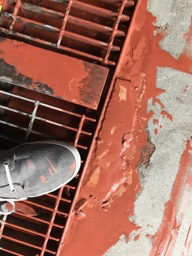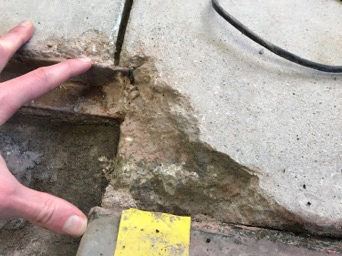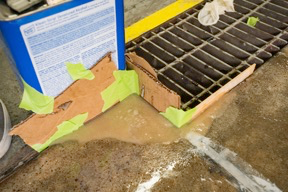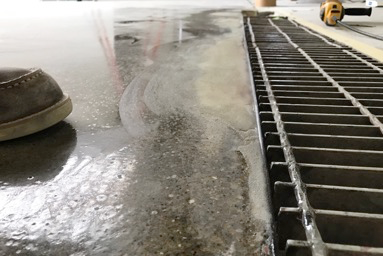“It’s all in the prep…”
You’ve heard it repeated over and over as you researched your epoxy coating project and it’s true, the best epoxy products available are only as good as the substrate to which they are applied. Cracked, spalled or otherwise damaged concrete will need attention as part of your surface preparation efforts in order to achieve and assure a successful coatings application.
In an ideal world every project would begin with a brand new concrete slab. In our world that’s not always the case but, fortunately for you, you’ve chosen Wolverine Coatings for your coatings needs and we have solutions for just about every challenge that you might face on your way to a durable and beautifully coated floor.
In this TechNote we will address the repair of significantly damaged concrete and will utilize a customer’s project to illustrate the proper repair of a cracked and displaced concrete utilizing Wolverine Coatings TrowelEase 1162 epoxy mortar patch kit. In this particular case the extent of the damage was not fully realized until all prior coatings were ground off revealing the compromised substrate. Due to overall rough condition of the existing substrate we chose to apply two 6-10 mil coats of BondTite 1101. The first coat was applied after all the damaged concrete had been exposed, removed and prepped. The second BondTite coat was applied after the TrowelEase 1162 repairs were completed. The first BondTite 1101 coat is not required but may be considered if the overall floor is in bad shape.


The examples above show a corner of the slab that had cracked all the way through as well as deteriorated concrete surface similar in appearance to spalled concrete. The first step was to identify and remove all the affected concrete. In the case of the broken corner it was simply a matter of loosening and removing all of the suspect material. For the deteriorated edge the customer pinged the surrounding concrete with a ball peen hammer, breaking up the compromised concrete. It is not necessary to utilize a lot of force, light to moderate taps of the hammer will reveal “soft” areas. Make sure to utilize proper eye, ear and respiratory protection!


Make sure to break up and remove all suspect concrete.




Once all the compromised concrete has been identified and completely removed the margins of the affected areas should be relieved a minimum of a ¼” via careful use of an angle grinder and appropriate abrasive wheel. Relieving the margins provides for a robust interlock between the old and new materials and once cured can be ground to a seamless transition.

A small quantity of Wolverine Coatings’ TrowelEase 1162 Parts A&B without the aggregate can be applied to the repair area a few hours ahead to act as a primer for the final 3 component TrowelEase 1162 PK patch material application. This will further enhance the bond line strength of the repairs.

… this is ideal and is now ready for the TrowelEase application.
Following the TrowelEase 1162 PK instructions and utilizing a mix wand attached to a heavy-duty ½” drill motor, mix at a ratio of 1 part A: 1 part B: 6 parts C (aggregate) and distribute into repair areas. You may choose to slightly over fill to allow for final machining and blending of the repair area after the TrowelEase has fully cured.


Using an 80grit metal oxide sanding disk on an angle grinder, remove excess TrowelEase 1162 PK until flush with surrounding concrete. Again, make sure proper personal safety equipment is used.




Once all repairs are complete remove all dust and debris, wipe down entire floor surface with denatured alcohol and apply BondTite 1101 primer coat (if more than 14 days has passed since the initial BondTite 1101 primer coat you will need to refer to our WCC recoat instructions). Congratulations on the successful repairs, your floor is now ready for the remaining LiquaTile and EnduraShield coats!

